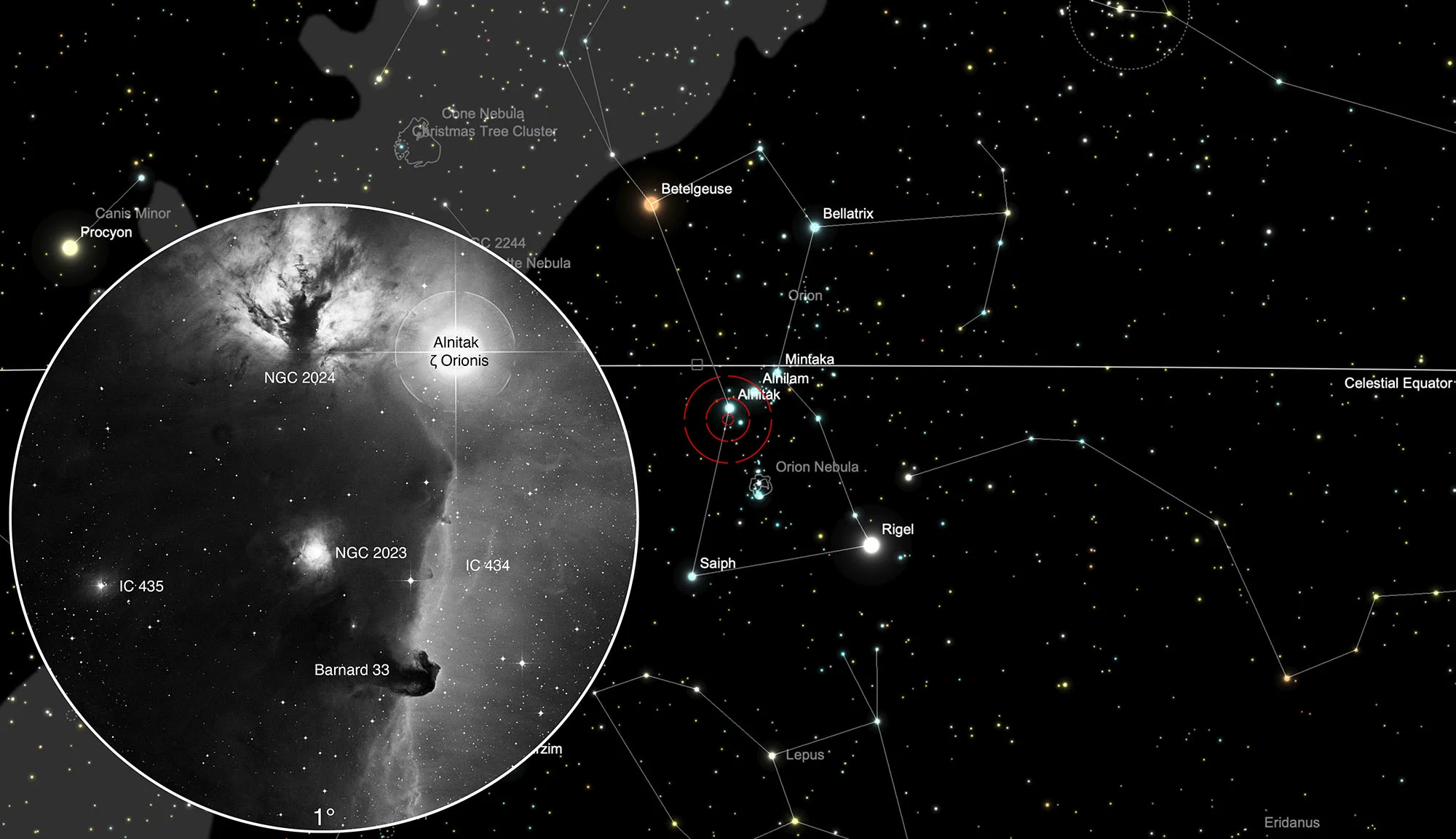Horsehead Nebula (Barnard 33) & IC 434
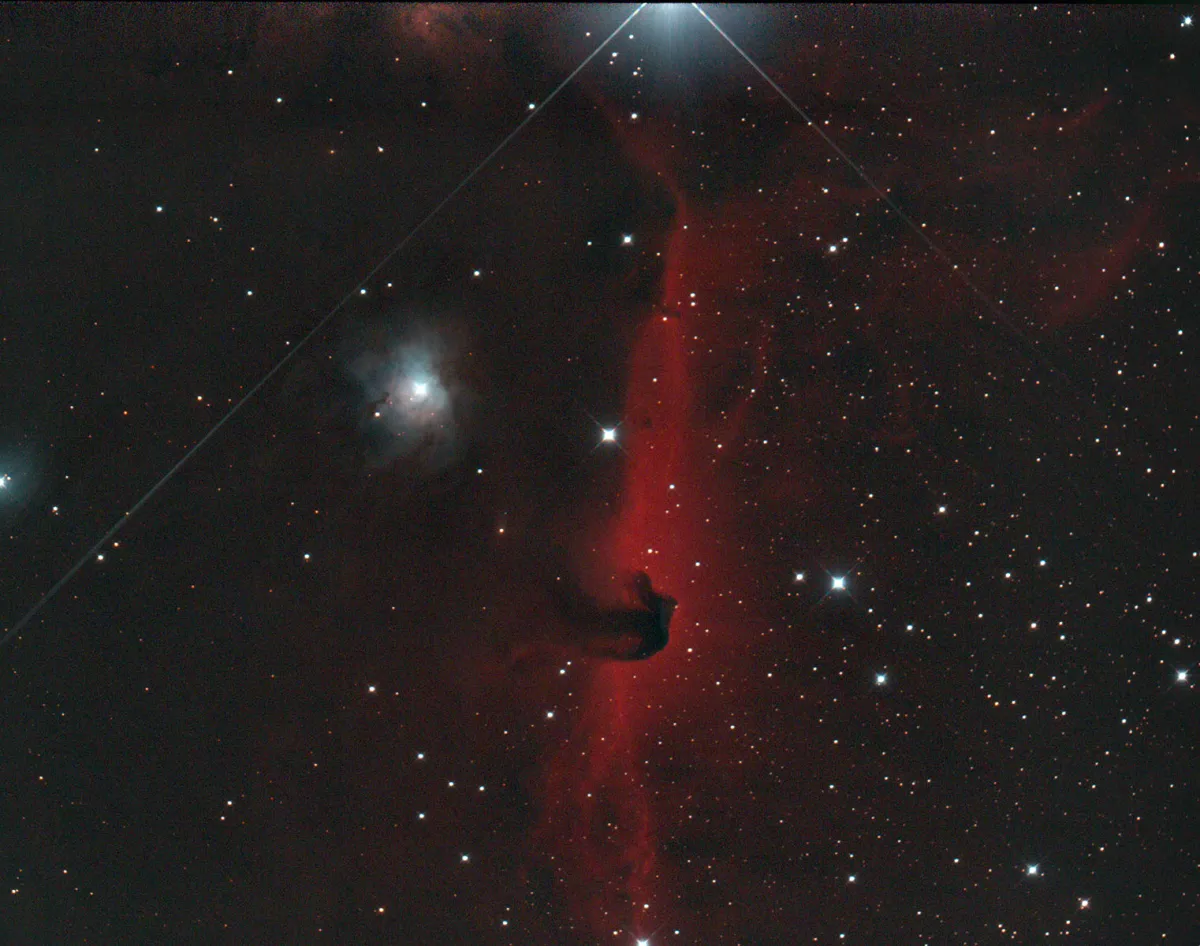
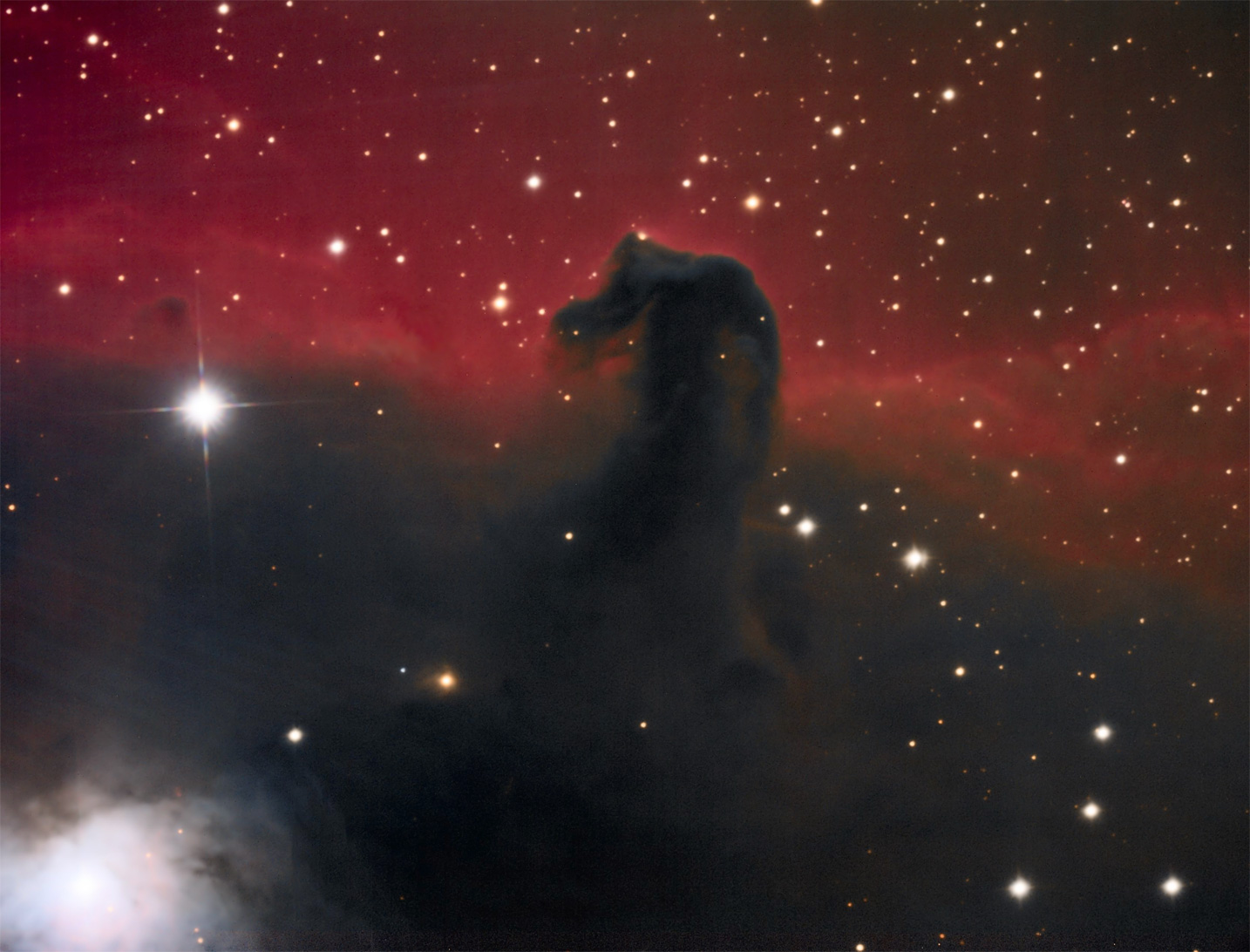
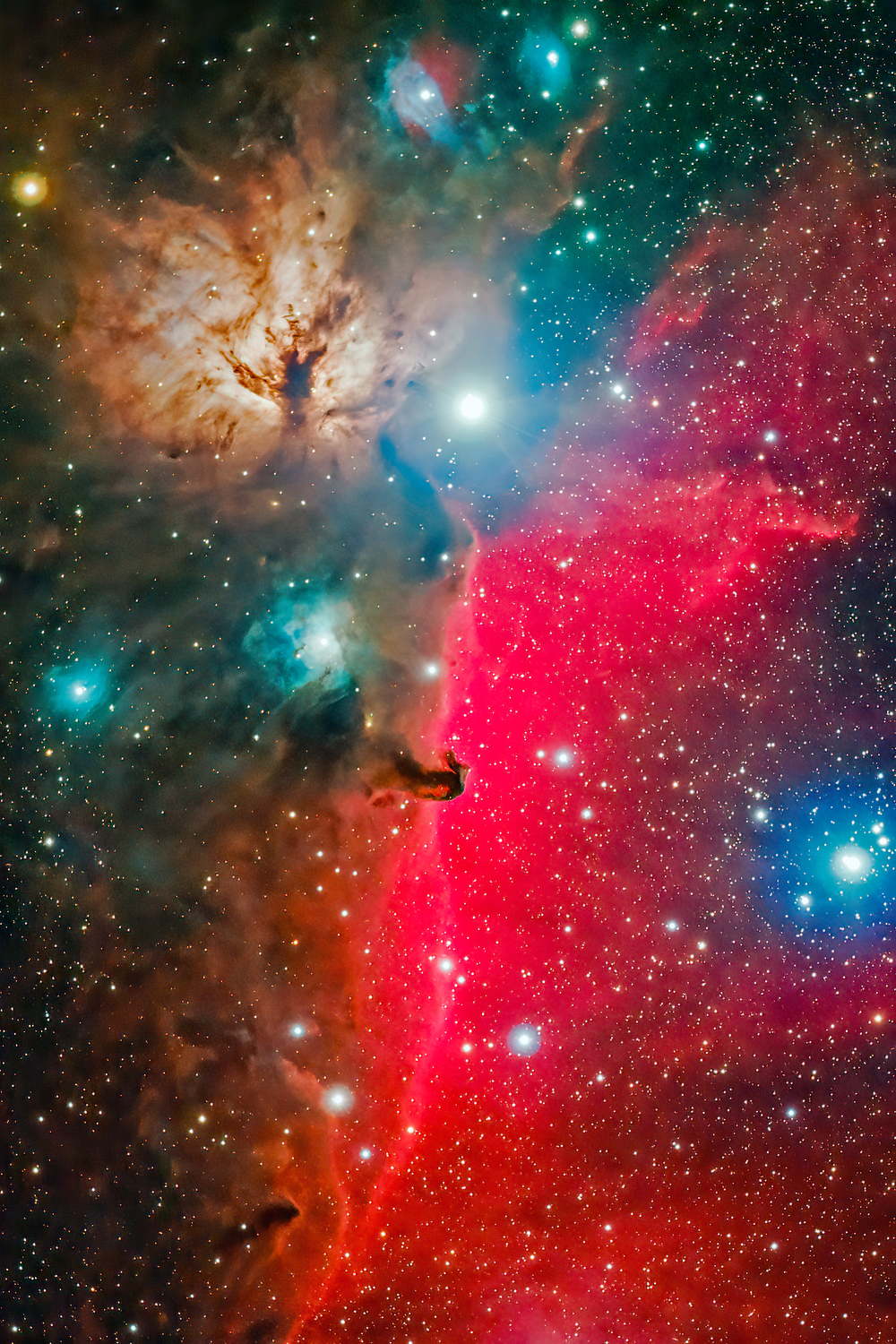
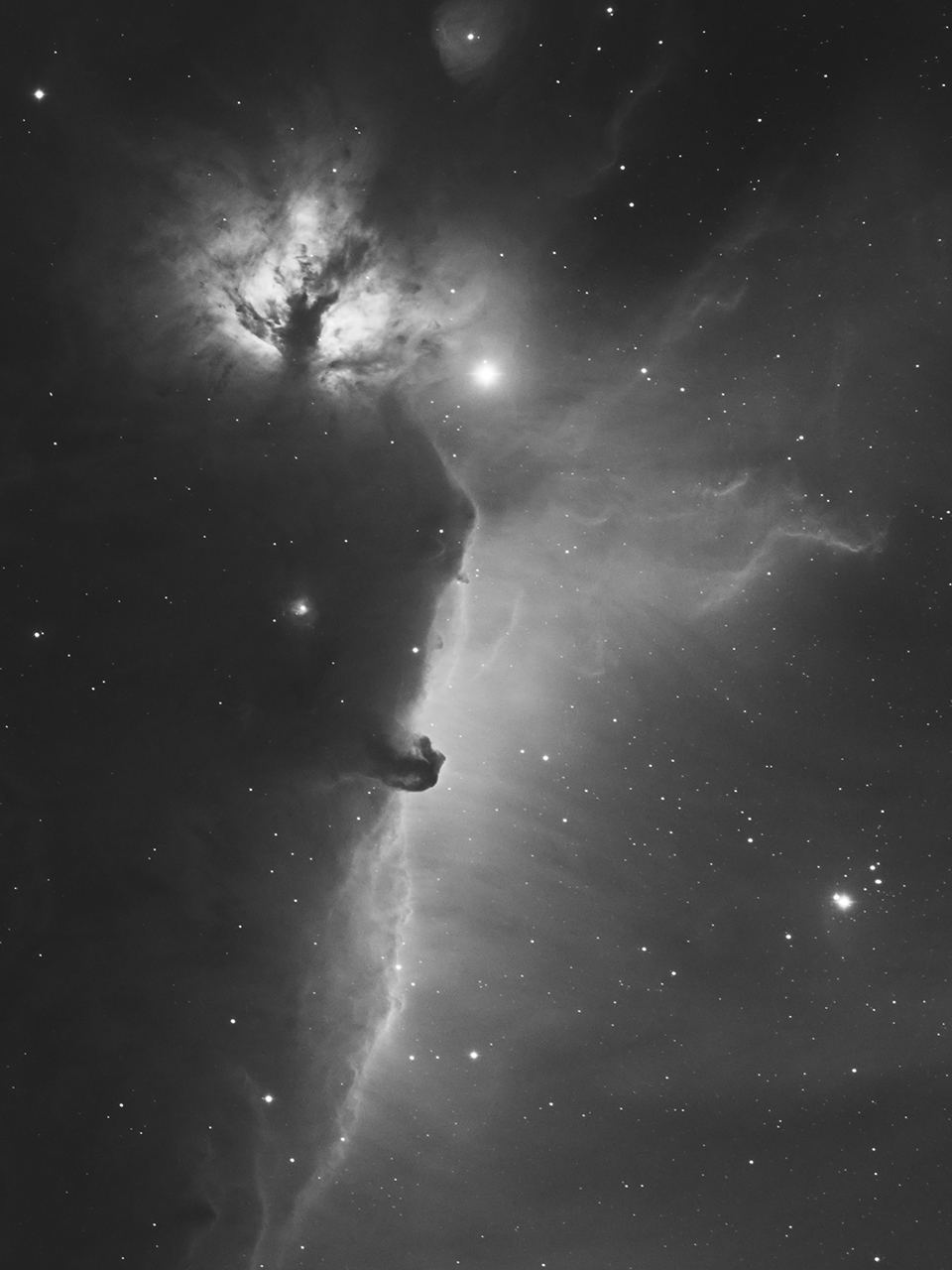
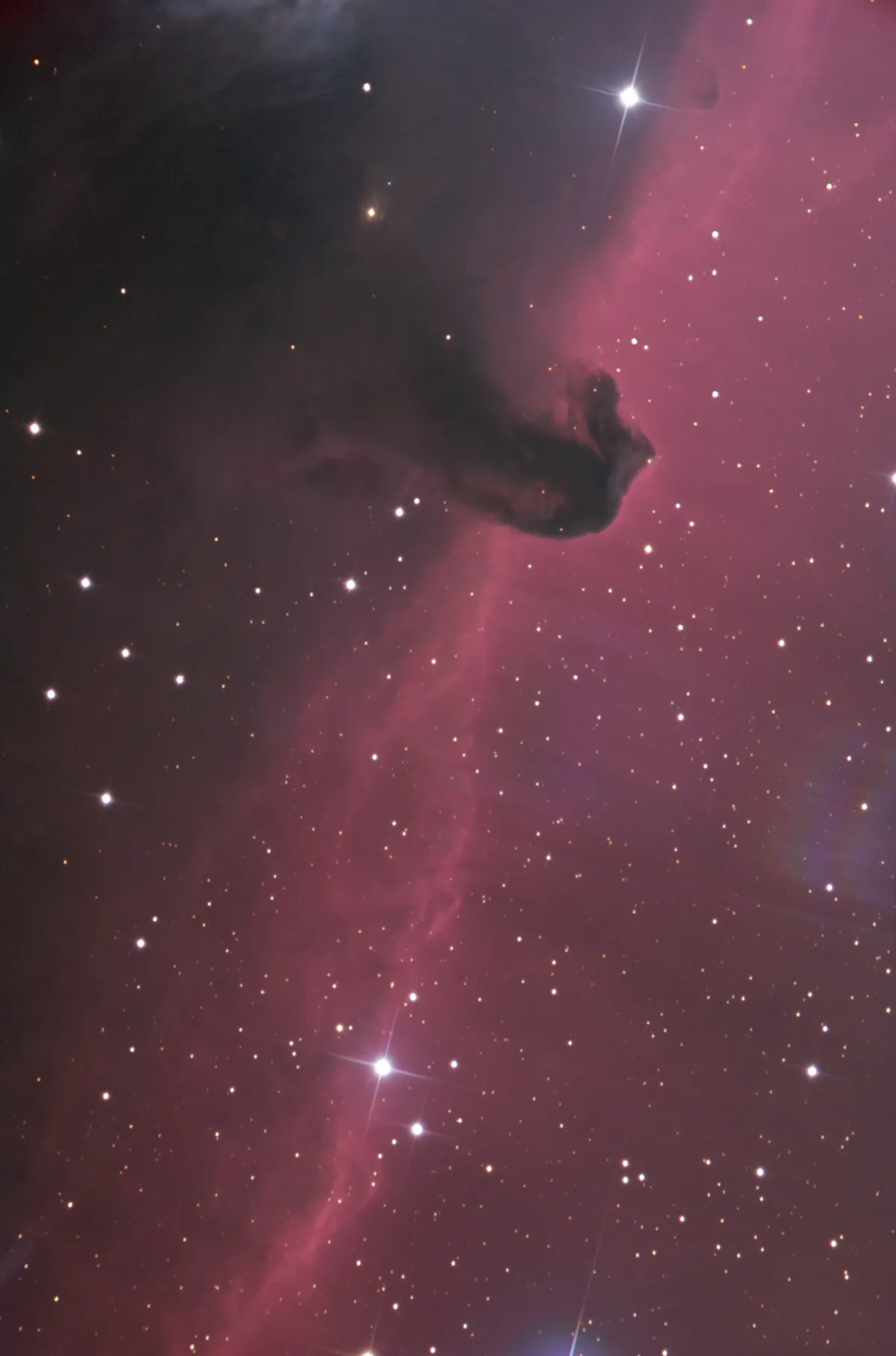

History
William Herschel had apparently overlooked the nebula IC 434 in 1765 when he found NGC 2023 (WH IV 24) on 6 January 1785 and almost a year later on 1 January 1786 NGC 2024 (WH V 28) at the eyepiece of his 18 inch reflector telescope with 20 IC 434 was only discovered in 1887 by the French astronomer Paul-Pierre Henry and also in 1888 by Williamina Fleming. Barnard realized in 1913 that the Horsehead Nebula (Barnard 33, B33) must be a dark nebula instead of simply missing stars and gas. [196, 277]
In 1959 Stewart Sharpless listed Sh 2-277 as irregular, amorphous/filmentary bright H-II nebula of 120' diameter, excited by star HD 37742 (ζ Orionis). He referred to Gase+Shain nebula 30 (IC 434) and his given position also matches IC 434. [?] Sometimes Sh 2-277 is also referred as NGC 2024. He probably combined all nebulosities in that area.
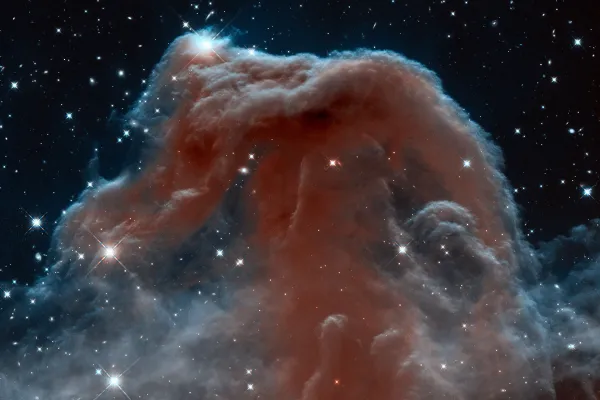
Physical Properties
The Horsehead Nebula is a nebula of cold gas and dust, which emits little light in the visible spectrum and therefore appears dark. The infrared image of the HST (Fig. 4) shows that this nebula glows in the infrared. This dark cloud extends southwest of Orion's left belt star (Alnitak, ζ Orionis) and a tip of it protrudes over the glowing red H-II emission nebula IC 434. This part resembles the head of a horse looking at the star Alnitak.
The area is about 1,500 light years away and covers an area about a quarter of the full moon. The mass of the Horsehead Nebula is estimated to be about 27 solar masses. In addition to hydrogen, the nebula also contains simple hydrocarbon compounds, as well as oxygen and sulfur. The nebula is a star formation region similar to the "Pillars of Creation" in M 16. [201, 202]
| Name | Barnard 33 |
| Object Type | Dark Cloud (nebula) |
| Right Ascension (J2000.0) | 05h 40m 59s |
| Declination (J2000.0) | -02° 27' 30" |
| Angular size | 6' × 4' |
| Identifiers | Barnard 33; M3T 31; NAME Horsehead Nebula; [DB2002b] G206.95-16.80; [OS98] 52 |
| Name | RA | Dec | Type | bMag | Dim | MD | Dreyer Description | Identification, Remarks |
|---|---|---|---|---|---|---|---|---|
| NGC 2023 | 05 41 38.2 | -02 15 33 | EN+RN | 10 × 10 | 0.400 | B * in M of L, lE neb | WH IV 24; GC 1226; LBN 954 | |
| NGC 2024 | 05 41 42.0 | -01 51 24 | EN | 30 × 30 | 0.400 | ! irr, B, vvL, black sp incl | WH V 28; GC 1227; CED 55P; Flame nebula | |
| IC 434 | 05 41 00.0 | -02 27 12 | EN | 11.0 | 60 × 10 | 0.460 | Neb, 60' l, south from ζ Orionis | LBN 953; CED 55N; Horsehead nebula |
| IC 435 | 05 43 00.0 | -02 18 46 | RN | 4 × 3 | 0.400 | Neb, * 8.5 | CED 55Q |
Finder Chart
The emission nebula IC 434 is attached to the left belt star (Alnitak, ζ Orionis) of the constellation Orion. This nebula is home to a dark cloud that lives up to its name, Horsehead. On 18 December it is in opposition to the Sun and crosses the meridian at local midnight.
Visual Observation
90 mm Aperture: The dark nebula can also be seen in small instruments. The three of us, Manfred, Martin and I, saw the Horsehead Nebula in a Sky 90mm refractor. We achieved this with indirect vision and thanks to which we knew the exact position of the 320mm ninja. We also lost less light in Manfred's telescope with the UHC filter. Rather, we now believe that the exit pupil is much more important than just a large opening. It probably just takes an excellent night of vision and calmness. [192] — Sky 90mm-Refraktor / TV-Nagler 9mm / UHC-Filter, Eduard von Bergen
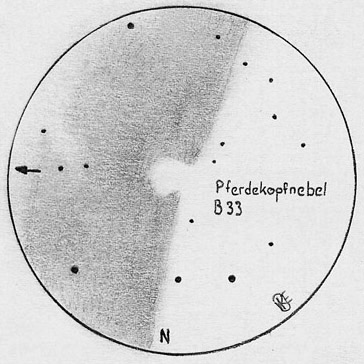
320 mm Aperture: This object is not a big problem with an H-beta filter. An important prerequisite is a dark, transparent sky, ideally alpine and / or a limit size of over 6 magnitudes. On the one hand, one recognizes the emission nebula IC 434 and, as a thumb protruding into it, a dark spot which represents the Horsehead Nebula. The dark spot can be made out with direct vision, the attachment to the muzzle is better visible with averted vision. There is always a lot of speculation about how and with what instruments one can even detect the Horsehead Nebula. It was already possible to see the horse's head in one evening, before without moonlight and later with moonlight. Of course, the place viewed just under an hour ago was still there and helped to perceive it in moonlight. [192] — 12.5" Ninja-Dobson, F:4.5 / TV-Nagler 13mm, 111x, 0.74° / H-beta-Filter, Eduard von Bergen
762 mm Aperture: Already clearly recognizable without the H-beta filter. With the filter even the snout can be seen. — 30" f/3.3 Slipstream Dobsonian, Hasliberg Reuti, 5. 11. 2021, Eduard von Bergen
